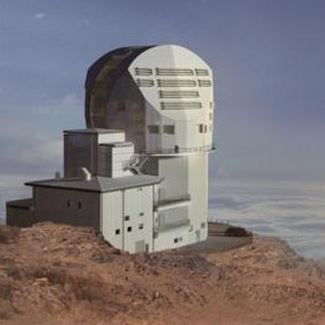A $344 million project to build cameras for the world’s largest and most revolutionary solar telescope is to be led by Queen’s University Belfast and Belfast-based business Andor Technology, the university announced on Tuesday.
The cameras, which form part of the Daniel K Inouye Solar Telescope (DKIST), to be situated in Hawaii, will be built by eight British universities and associated companies.
The telescope is named after the late Hawaii Senator Dan Inouye (1924-2012).
DKIST, which will have a four-metre diameter primary mirror, is being constructed by the US National Solar Observatory on Haleakala Mountain in Maui, Hawaii. It will be able to pick up unprecedented detail on the Sun’s surface – equivalent to being able to examine a £1 coin from a distance of 100 kms.

DKIST, the world’s largest solar telescope, will be completed in 2019 and will be located in Hawaii.
Researchers hope DKIST will help answer some fundamental questions at the core of contemporary solar physics. This will be done through high-speed (sub-second timescales) spectroscopic and magnetic measurements of the Sun’s photosphere (visible surface), chromosphere (an irregular layer above the photosphere), and corona (an aura of plasma that surrounds the Sun).
DKIST is being paid for by the US National Science foundation, plus £2.5m of funding provided by the Science and Technology Facilities Council.
Scientists say the new telescope will give us a deeper understanding of how solar flares influence space weather and how long-term changes in the Sun are influencing climate change.
Principal Investigator of the UK consortium, Professor Mihalis Mathioudakis of the Astrophysics Research Centre at Queen’s University Belfast, said:
“The Sun is the most important astronomical object for humankind with solar activity driving space weather and having profound effects on global climate and technology-based communications. To understand solar activity we need to observe and model the physical processes in the solar atmosphere on their intrinsic spatial and temporal scales so that, among other questions, we can reliably forecast this activity in space.”
“Scientific discoveries demand technological innovation and play a major role in economic growth. DKIST will be a revolutionary instrument for ground-based solar physics, which is a growth area in the UK.”
“It will be in a position to explore key questions regarding solar magnetic field generation and dissipation, solar variability, atmospheric structure and dynamics. Our consortium will deliver key equipment that will allow DKIST to achieve these scientific goals and it’s another example of how Queen’s research impacts on society, both locally and internationally.”
The other UK institutes that form part of the consortium building the cameras are Armagh Observatory; the Universities of Glasgow, Sheffield, St. Andrews, Warwick and Northumbria; and University College London.
The consortium will partner with Andor Technology, a Queen’s University spinout, and the Science and Technologies Facilities Council.
Dr Thomas Rimmele, DKIST Director, said:
“We are excited to have the UK consortium on board as partners. DKIST will be the world’s most powerful solar telescope. The scientific and technological expertise represented by the Queen’s University Belfast-led consortium is a great asset to the project.”
Technical Director at Andor Technology, Dr. Donal Denvir, said:
“Andor will play a central role in the design and manufacture of state-of-the-art detectors for this high-profile, solar-physics initiative. The technology will provide an innovative combination of high-performance specifications that simply do not exist today, a solution that will prove enabling not only for next-generation solar studies, but for the wider professional astronomy community and beyond.”
The aftermath of solar eruptions can have a significant impact on our planet, disrupting communications grids and harming power stations if there is no warning. Therefore, finding out how they are created is key to part of the work.
